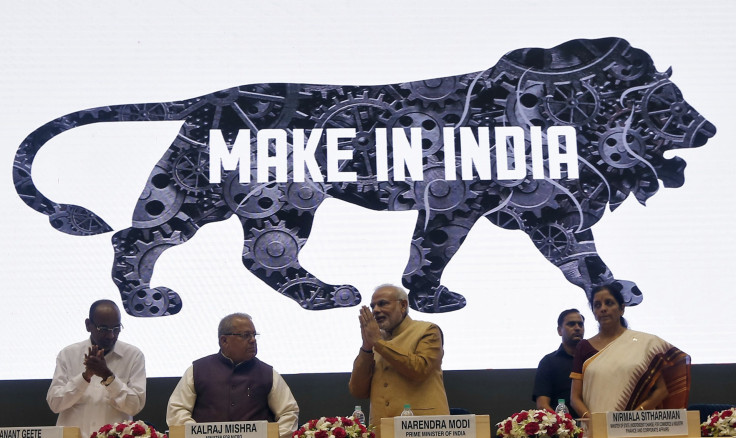Narendra Modi's 'Make In India' Campaign Seeks To Captivate Young Consumers: Report

Indian Prime Minister Narendra Modi’s "Make in India" campaign, aimed at turning the country into a global manufacturing hub, seems to have struck a chord with Indian retailers and consumers alike. Following the campaign's launch in September, Indian consumers, mainly in the 16 to 35 age group, have been seeking out ‘Make in India’ themed products, according to a report by The Economic Times, an Indian business daily.
Radhika Ghai Aggarwal, co-founder and chief marketing officer at Shopclues, an Indian online retail website, told The Economic Times that her company is planning to introduce merchandise with the Make in India logo of a lion printed on them. Retailers around the country, especially the online versions, are gearing up for the upcoming holiday season with hefty discounts aimed at this particular demographic who have embraced online shopping in a big way.
However, government officials have sought to standardize the campaign's adoption. Officials at the Department of Industrial Policy and Promotion, or DIPP, which is a part of the Indian commerce ministry, reportedly said that the ministry too was planning to launch its own line of Make in India-themed products soon.
“We want everyone to use the logo but there has to be a quality to it. The logo can't be distorted on the will and desire of companies or individuals. We are being strict about it so that the logo doesn't lose its character,” Atul Chaturvedi, a DIPP official, told The Economic Times.
The Make in India campaign, which was launched by Modi on Sept. 25, seeks to emulate China and other East Asian powerhouses by focusing on export-oriented manufacturing.
Under the program, 25 sectors, including biotechnology, automobiles, space and information technology, have been identified to enhance the overall “global competitiveness of the Indian manufacturing sector.”
“I feel Make in India is like a movement reflecting a new mindset of growth in India, which in the coming years will drive India's growth story in a new way,” DIPP Secretary Amitabh Kant told the Press Trust of India, an Indian news agency.
© Copyright IBTimes 2024. All rights reserved.












